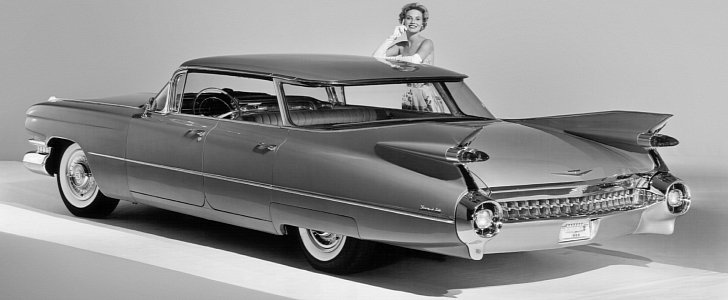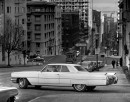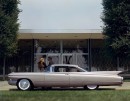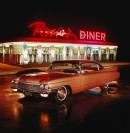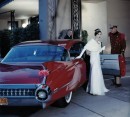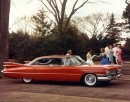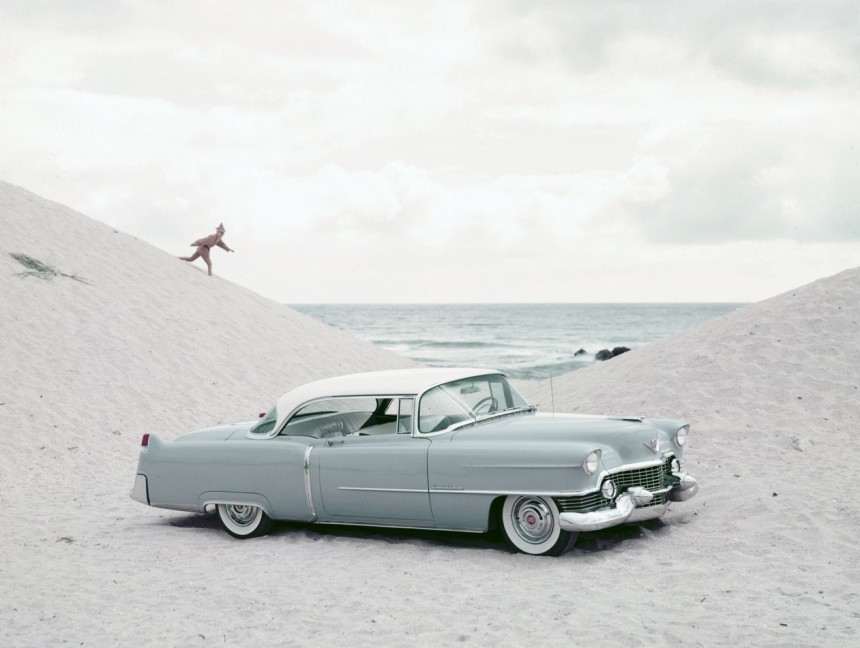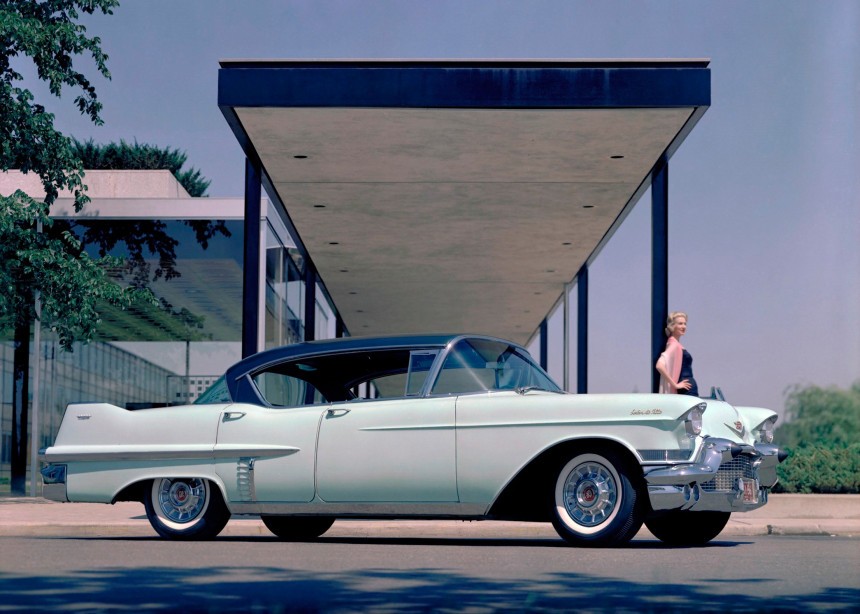Cadillac isn’t the only manufacturer whose 1950s and 1960s cars had outlandish fins that served no real purpose other than to look daring, opulent and cool.
When this styling feature first debuted, it was really more just a small upward kink at the back of the rear fender, but as the years passed, the fins became bigger, bolder and more noticeable. They were present on the largest of Cadillac models from 1948 to around 1964; after that year, the fins all but disappeared, although the shape of the rear fenders and light clusters wasn’t changed all that much.
The Cadillac deVille has to be the most iconic of models that people associate with flamboyant fins, which is why it makes the perfect case study to observe how the design, style and size of this feature changed over the years.
Fins first appeared on the 1948 Cadillac Sixty-Two Coupe deVille, but they are nowhere near as daring as those on later models. They can best be described as protrusions from the top of the rear fenders which also partly housed the rear light clusters - they really are timid compared to what came in later decades.
The design of the fins remained pretty much unchanged until Cadillac introduced the 1955 Sixty-Two Coupe deVille. Its design was an evolution of the previous model and its hardware really looked like proper fins for the first time. The style of light cluster used was quite similar, but the fins themselves actually extended back along the top of the fender.
Then the 1957 Cadillac Sixty-Two deVille was introduced with even bigger ones and they no longer had integrated lights in them. For this model year, the rear light clusters were comprised of two circular chrome-rimmed pieces placed at the bottom of either fin; it has to be said that they were noticeably bigger than previous fins, and since they no longer have lights on them, they don’t really serve any functional purpose.
The year 1957 was also marked by the launch of another Cadillac with even bolder fins, the Sixty Two Eldorado Special Biarritz. This lavish drop-top had fins that were moved further inward, closer to the center of the car and they had a vertical strip of chrome running along their edges to accentuate their shape - bicyclist safety clearly wasn’t an issue back then, because these fins are very pointy and they look really dangerous.
Cadillac launched a heavily revised Sixty-Two for 1958, a model with twin headlights up front and even bigger fins. It has to be said that this model year has some of the biggest and most noticeable such features ever put on a Cadillac. The same year also saw the launch of the Eldorado Brougham, a striking sedan with rear suicide doors, fake side vents integrated into the rear doors and, of course, some really big fins to finish off the rear.
However, 1959 is the year when the Cadillac Sixty-Two with the biggest and most distinctive fins came along. They have a rocket-inspired shape (they were conceived in an age when space exploration was a major discussion topic in the U.S.); they are not only very big, but their rear part is V-shaped and the light clusters (that are modeled after the flame coming out of a rocket’s exhaust nozzle) are placed in the middle of the V.
From 1960 onward, fins on Cadillac Sixty-Twos begin to shrink. The 1960 to 1964 models have long fins, that start on the rear doors (on four-door models) and extend all the way out the back. But these fins are much more neatly integrated into the car’s design, so much so that you might miss them if you don’t pay special attention.
By 1965, Cadillac ditches this design altogether. The 1965 to 1970 DeVille still has a fin-like design to its rear end, with integrated rear light clusters, but by that year, it was clear that the age of fins had dawned. Other manufacturers still followed suit and by the early 1970s, there were no more new cars with fins on sale in the States.
The Cadillac deVille has to be the most iconic of models that people associate with flamboyant fins, which is why it makes the perfect case study to observe how the design, style and size of this feature changed over the years.
The design of the fins remained pretty much unchanged until Cadillac introduced the 1955 Sixty-Two Coupe deVille. Its design was an evolution of the previous model and its hardware really looked like proper fins for the first time. The style of light cluster used was quite similar, but the fins themselves actually extended back along the top of the fender.
Then the 1957 Cadillac Sixty-Two deVille was introduced with even bigger ones and they no longer had integrated lights in them. For this model year, the rear light clusters were comprised of two circular chrome-rimmed pieces placed at the bottom of either fin; it has to be said that they were noticeably bigger than previous fins, and since they no longer have lights on them, they don’t really serve any functional purpose.
Cadillac launched a heavily revised Sixty-Two for 1958, a model with twin headlights up front and even bigger fins. It has to be said that this model year has some of the biggest and most noticeable such features ever put on a Cadillac. The same year also saw the launch of the Eldorado Brougham, a striking sedan with rear suicide doors, fake side vents integrated into the rear doors and, of course, some really big fins to finish off the rear.
However, 1959 is the year when the Cadillac Sixty-Two with the biggest and most distinctive fins came along. They have a rocket-inspired shape (they were conceived in an age when space exploration was a major discussion topic in the U.S.); they are not only very big, but their rear part is V-shaped and the light clusters (that are modeled after the flame coming out of a rocket’s exhaust nozzle) are placed in the middle of the V.
By 1965, Cadillac ditches this design altogether. The 1965 to 1970 DeVille still has a fin-like design to its rear end, with integrated rear light clusters, but by that year, it was clear that the age of fins had dawned. Other manufacturers still followed suit and by the early 1970s, there were no more new cars with fins on sale in the States.
